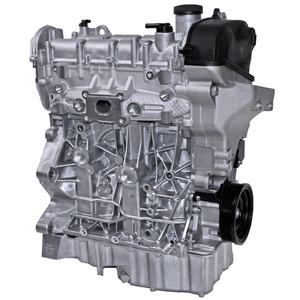Opel Corsa Engine: Efficiency and Reliability for Your Car
Opel Corsa Engine: Efficiency and Reliability for Your Car
Blog Article
Exploring the Inner Workings of a Compact Vehicle's Engine System
As vehicle drivers, we commonly take for given the complex processes that happen within the boundaries of our vehicle's engine system. In this exploration of a portable vehicle's engine system, we will unwind the internal operations of this mechanical symphony, dropping light on the enigmas that drive us forward on our everyday trips.
Burning Refine Summary
The burning procedure in a compact automobile's engine system is a critical mechanism that effectively transforms gas right into energy to power the vehicle. This procedure occurs within the combustion chamber of the engine, where fuel and air mix, spark, and generate regulated explosions. The combustion process includes four main stages: intake, compression, power, and exhaust.
During the intake phase, the piston moves downward, pulling in a mix of air and gas into the burning chamber. The next phase, compression, includes the piston relocating upwards, compressing the air-fuel combination to enhance its effectiveness. Ultimately, in the power stage, the stimulate plug ignites the pressed mixture, leading to a quick growth of gases that compels the piston back down. This descending movement produces the power required to drive the car. Ultimately, in the exhaust phase, the burnt gases are eliminated from the combustion chamber with the exhaust shutoff, preparing the chamber for the next cycle. This cyclic combustion process is basic to the operation of a compact automobile's engine system, making certain effective power conversion for propulsion.
Piston and Cyndrical Tube Communication

The piston's accurate fit within the cylinder is vital for preserving optimal compression and preventing energy loss during combustion. Tight clearances between the piston and cylinder walls ensure efficient sealing, allowing the piston to move efficiently without enabling gases to leak past. Proper lubrication is also vital to decrease friction and put on between these elements, improving durability and efficiency.
Moreover, the style and materials used in manufacturing the piston and cylinder influence engine performance and durability. Modern engines often use light-weight yet long lasting products like aluminum alloys for pistons and cyndrical tube liners to reduce inertia and boost thermal performance. Overall, the unified interaction in between the piston and cyndrical tube is fundamental to the engine's capability and general official statement performance.
Gas Injection System Functionality
Gas shot systems in compact lorry engines play an important function in precisely supplying fuel to the burning chamber for effective and controlled ignition. The gas injection system operates by injecting gas into the burning chamber at the optimal minute throughout the engine's operation (opel corsa engine). This specific timing makes certain that the fuel blends uniformly with the air for correct combustion, bring about improved gas efficiency and minimized exhausts
There are primarily two kinds of gas injection systems made use of in small vehicle engines: port fuel shot (PFI) and direct gas injection (DFI) PFI systems infuse fuel right into the intake port prior to the intake shutoff, while DFI systems infuse fuel straight into the burning chamber. Both systems have their advantages, with DFI supplying far better gas atomization and PFI supplying an extra great site economical solution.
Comprehending Engine Air Conditioning Devices
Effective operation of a small car's engine counts greatly on the efficiency of its cooling mechanisms. The cooling system in a compact lorry commonly is composed of numerous parts working together to manage the engine temperature. Understanding these engine air conditioning devices is crucial for keeping the efficiency and longevity of a portable automobile's engine system.

Exhaust System Elements Explained
The optimal performance of a small automobile's engine cooling devices depends on a complementary system recognized as the exhaust system, which makes up numerous essential elements for ensuring effective discharges and engine performance. The exhaust manifold gathers exhaust gases from the engine's paths and cylinders them to the catalytic converter.
One vital component of the exhaust system is the oxygen sensor, which checks the oxygen degrees in the exhaust gases to help regulate fuel usage and ensure ideal engine efficiency. opel corsa engine. Additionally, the resonator may exist in some exhaust systems to decrease sound degrees. In general, the exhaust system plays an essential role in maintaining engine performance, reducing damaging exhausts, and ensuring a quieter driving experience for portable vehicle owners

Verdict
To conclude, the compact automobile's engine system is an intricate combination of elements that work with each other to facilitate the combustion procedure, convert fuel right into power, and remove waste gases. Recognizing the inner functions of the engine system, consisting of the piston and cyndrical tube interaction, gas injection system, engine cooling systems, and exhaust system elements, is essential for keeping optimal efficiency and performance of the vehicle.
The combustion procedure in a portable lorry's engine system is a crucial device that efficiently transforms gas right into power to power the lorry.Gas shot systems in portable lorry engines play an essential duty click resources in precisely delivering fuel to the combustion chamber for regulated and efficient ignition.There are primarily two kinds of fuel injection systems used in compact car engines: port fuel shot (PFI) and direct fuel shot (DFI) Recognizing these engine cooling mechanisms is important for keeping the efficiency and durability of a small car's engine system.
The optimal performance of a small car's engine cooling mechanisms depends on a corresponding system understood as the exhaust system, which makes up various crucial parts for making sure efficient exhausts and engine efficiency.
Report this page